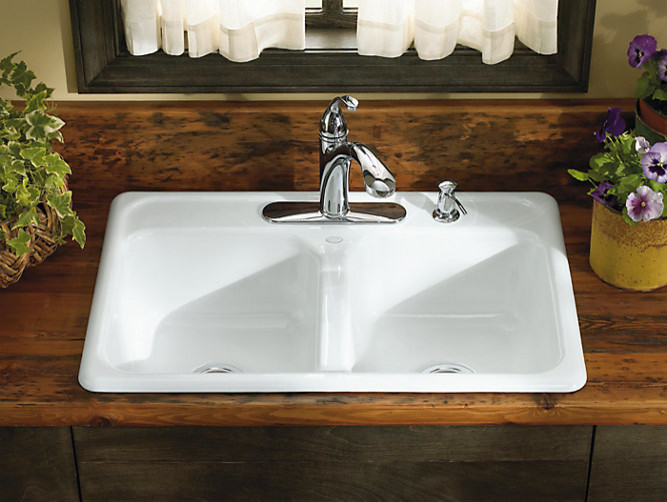When repairing cracks in door frames, it is important to identify the extent of the damage and the type of damage. If minor cracks have started to appear due to the door being slightly out of kilter, then the repair process is simple; if the cracks are more serious, then either additional repair or external reinforcement may be necessary for stepped-up security. Cracks should always be filled in with a durable set-screw solution or a wax-based construction putty; for aesthetic reasons, minimally-visible coloured filler may also be used to match the environment.Repair Cracks in Door Frames
In many cases, an interior door that won't close or close properly is simply a case of the door having stiff hinges; this is often caused by a build-up of paint, mould, or grime. In addition, an unbalanced door will not close correctly. To remedy this, you can make an adjustment to the hinges, use a jigsaw to trim the edges of the door, or plan for a new, better-fitting door. If the door won't latch shut, then the door casing may need to be cut down or the strike plate moved to fit flush with the latch.Fix a Door That Won't Close Properly
A malfunctioning door lock is often a symptom of incorrect installation or regular wear and tear over time. In some cases, the door lock may be too small for the latch plate and will need to be replaced with the correct size – the same goes for the strike plate, too. If it is an issue of the furniture not being aligned correctly, then this can be resolved by adjusting the strike plate screws or replacing the screws with a longer, adjustable-length screw.How to Adjust a Malfunctioning Door Lock
Interior doors can be traditionally 'bifold', 'sliding', or 'flush', with each type boasting particular benefits and aesthetic styles. Bifold doors open using two overlapping doors that are hung on a pair of pivot hinges and are an excellent choice for creating a seamless flow of space between two rooms, whilst sliding doors use a lower-track roller system to slide along securely; both of these door types can be custom-made to any size or shape. Flush doors, on the other hand, have a simple, sleek design, offering a perfect balance between style and function for a classic appearance.Understanding Different Types of Interior Doors
Once you have decided upon the type of door and made and necessary adjustments, then it's time to actually install the new interior door. Make sure to measure the door and frame correctly and mark out the new door opening to get accurate measurements. Once you have identified where the opening should be, cut out the door jamb and line up the door hinges as close as possible within the jamb. Finally, fit the hinges, attach the door, and adjust it before shutting and latching it.How to Replace an Interior Door
House design is a fascinating topic and can be interpreted in myriad ways. When it comes to interior door replacement, you could choose a vintage-style look by using the Art Deco style of the 1920s as inspiration; classic materials such as etched glass and chrome-plated fittings; or opt for a more modern update with framed mirrors, glass panels, or panel-swipe doors. You could even add a more personalised touch with a totally unique design – special details such as laser-cut designs, elaborate handle sets, or artistic windowpanes.House Designs and Ideas for Interior Door Replacement
A door trim can increase the aesthetic value of an interior door, but it also serves a functional purpose, too. The trim, or moulding, serves to cover any gaps and protect the frame and wall from leaks and drafts. Fixing door trim can be done with nails or construction adhesive and requires very little in the way of tools, skill, or strategy. To begin with, the trim should be attached to the frame, then to the wall – if the trim is to be painted after attachment, then caulk must be applied to the inserted nails for a smooth finish.How to Fix Door Trim
Weather stripping is essential for keeping your interior door insulated and free from draughts. When weather stripping starts to wear down and no longer serves its purpose, then it is important to replace it before any damage from exposure sets in. First, you will need to measure the weather stripping to determine the required length. Once cut, it can be secured in place with nails or adhesive; alternatively, you can use a high-density foam to seal any tight gaps between the weather stripping and door frame.How to Replace Weather Stripping
Installing an interior door is easy enough, but there are still a few tricks that you can use to ensure a quick, clean, and secure installation. One such tip is to pre-fit the door in place before finally securing it; this will allow you to further adjust the door and casing if necessary. For a smooth finish, it is also worth filling any holes and hollows with wood putty before picking up a putty knife and sealing the edges of the door frame. Finally, when hanging the door, use a spirit level and also consider installing door stops to prepare for unfortunate instances of unhinging.Tips for Installing an Interior Door Better
When it comes to interior door problems, they often stem from either faulty installation or basic wear and tear. Oftentimes, a warped door will enter the fray due to moisture gathering; to remedy this, you can adjust the door by trimming from the bottom, use a hairdryer to evenly disperse the damp, or use expanding foam to create a seal. If the door won't open or close properly, then chances are it is either jammed or the hinges need to be adjusted. If the latch is relatively new, but the door still jams, then the latch or strike plate may need to be replaced.Common Interior Door Problems and Solutions
On occasion, interior doors become subject to unwanted paint; whilst the paint can be chipped away, running the risk of further damage, it may be wiser to use an organic, natural remover or diluent. For example, a solution of vinegar and baking soda can be used to skillfully remove paint from the door, with the more stubborn marks generally requiring the application of an eco-friendly solvent. In regards to lacquered doors, then turpentine is the perfect solution, as it can be safely applied without the risk of damaging the surface or top coat.Tips for Removing Paint off Interior Doors
Repairing Interior Doors to Enhance Your Home's Design
 Interior doors come in a variety of styles, depending on the type of door and the home’s design. Doors can be used for design purposes, to divide up interior rooms, block off areas, and to provide access between rooms. A variety of door materials is also available, including wood, metal, glass, and plastic. In order to ensure that interior doors remain in good condition, and to maintain the aesthetic of your home, it is important to properly repair any interior door faults that may have occurred over time.
Interior doors come in a variety of styles, depending on the type of door and the home’s design. Doors can be used for design purposes, to divide up interior rooms, block off areas, and to provide access between rooms. A variety of door materials is also available, including wood, metal, glass, and plastic. In order to ensure that interior doors remain in good condition, and to maintain the aesthetic of your home, it is important to properly repair any interior door faults that may have occurred over time.
Troubleshooting Interior Door Faults
 When repairing an interior door, it is important to first troubleshoot the fault. Faults can range from doors that won't stay shut, doors that are difficult to open or close, or a door that is sagging or too tight in the frame. It may also be necessary to investigate why a door is difficult to open or close, as this may be caused by misalignment in the hinges or other problems.
When repairing an interior door, it is important to first troubleshoot the fault. Faults can range from doors that won't stay shut, doors that are difficult to open or close, or a door that is sagging or too tight in the frame. It may also be necessary to investigate why a door is difficult to open or close, as this may be caused by misalignment in the hinges or other problems.
Adjusting the Hinges
 If the problem with the interior door is misalignment, then adjusting the hinges might be all that is needed. To do this, loosen the screws on the hinges so that they can be adjusted, and then align the hinges so that the door is even. Once the hinges are adjusted, use a level to ensure that the door is even and then tighten the screws again.
If the problem with the interior door is misalignment, then adjusting the hinges might be all that is needed. To do this, loosen the screws on the hinges so that they can be adjusted, and then align the hinges so that the door is even. Once the hinges are adjusted, use a level to ensure that the door is even and then tighten the screws again.
Replacing Parts
 If the hinges on the interior door have been worn down, then replacing them may be necessary. It is important to replace the parts with the same type of part used for the original installation, as this will ensure that the door is installed correctly. If the door is still difficult to open or close, then replacing the door handle or lock may be necessary.
If the hinges on the interior door have been worn down, then replacing them may be necessary. It is important to replace the parts with the same type of part used for the original installation, as this will ensure that the door is installed correctly. If the door is still difficult to open or close, then replacing the door handle or lock may be necessary.
Adding Weather Stripping
 Weather stripping is used in order to help minimize drafts and moisture buildup from outside sources. It is important to install weather stripping correctly in order to avoid future interior door faults. First, measure the area where the weather stripping will be installed, and then cut the weather stripping to size. Once the weather stripping is in place, close the exterior door and check to make sure the weather stripping is sealed correctly.
In conclusion, proper interior door repair can help ensure that a door's aesthetic and functionality will not be compromised. When repairing interior doors, it is important to assess the problem first and then decide whether it can be fixed by adjusting the door or replacing parts. Additionally, weather stripping can be used to help maintain a home's interior design, by providing an added layer of protection from rain and drafts.
Weather stripping is used in order to help minimize drafts and moisture buildup from outside sources. It is important to install weather stripping correctly in order to avoid future interior door faults. First, measure the area where the weather stripping will be installed, and then cut the weather stripping to size. Once the weather stripping is in place, close the exterior door and check to make sure the weather stripping is sealed correctly.
In conclusion, proper interior door repair can help ensure that a door's aesthetic and functionality will not be compromised. When repairing interior doors, it is important to assess the problem first and then decide whether it can be fixed by adjusting the door or replacing parts. Additionally, weather stripping can be used to help maintain a home's interior design, by providing an added layer of protection from rain and drafts.







































































































